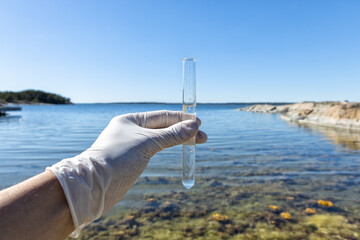Updated on December 9, 2022
Advantage of Water Testing
Water Quality Testing Colorado is necessary to maintain drinking water’s safety and quality. Millions of tests are performed daily and are carried out to fulfill regulatory requirements and to maintain the safety of the population.

Using test strips for water testing is an affordable and easy way to measure the quality of your drinking water. With these handy devices, you can quickly and accurately read your water’s pH and total hardness. They also help detect the presence of free chlorine and stabilizers.
Test strips are small, thin, and single-use. They are dipped into a sample of water for a few seconds, and then they change color to indicate the presence of a contaminant. They are available in several different colors, including red-orange, green-orange, and light blue-orange. They can be used on all types of water sources.
Optimal dosages of chemical coagulants and flocculants are critical for the performance of a water treatment plant’s filter. Jar testing is an alternative to traditional methods for obtaining the optimum coagulant dose. It involves taking a sample of water and adding a chemical coagulant/flocculant to the water. The resulting floc is then separated.
Using advanced mathematical tools, coagulant/flocculant dosage can be determined. This will enable the operator to avoid overfeeding of chemicals. It is also a valuable tool for water treatment plant operators. The book provides practical and theoretical information on jar tests. It discusses the parameters that can be optimized and the effect of mixing intensity and time.
Coliform bacteria are bacteria that are found naturally in the environment and animals. They are often called indicator organisms because they are easier to identify than disease-causing pathogens. Depending on the type of bacteria, the amount of coliforms in water can affect the quality of the drinking water. Some coliforms are harmless to humans, while other types can cause severe diarrhea and general flu-like symptoms.
If you have a private well, you should consider testing your water for coliforms annually. This is especially true if you are an elderly person who may be more susceptible to fecal contamination. Coliform bacteria are present in a wide range of places, from the digestive tracts of animals to the soil. Usually, they are present in higher concentrations than dangerous pathogens.
Detecting iron bacteria in water is usually a simple process. A good indicator of the presence of this bacteria is an oily sheen on the surface of the water. However, it would be best if you did not assume that this is the only sign of a problem. Iron bacteria can also produce unpleasant odor and stains. The oxidation of dissolved iron and manganese causes these. Unlike sulfur bacteria, they do not produce hydrogen sulfide, which gives the water a rotten egg smell.
If you find these stains or the rusty tint in your water, you should contact a qualified professional to assess the situation. You may need to use a disinfectant or other treatment to remove the iron bacteria.
Whether you are a private well owner or you are using a public water supply, it is important to have your water tested for nitrate and nitrite contaminants. These compounds are tasteless and odorless, and their presence in water may cause health problems.
There are several types of testing available. The best option is to check your water samples at a certified laboratory. This will ensure accurate results. However, a DIY test kit can also test your water at home. These kits are not as accurate as lab procedures, but you can get an idea of nitrate and nitrite concentration. SMCLs (Secondary maximum contamination levels) are guidelines for public water systems. They are a form of federally-mandated mandates, which help water facilities address less critical contaminants. They also guide the public.
Secondary contaminants are chemical compounds that are mainly disinfectant byproducts or radionuclides. They affect the taste, color, and smell of drinking water. Their concentrations are less toxic than inorganic chemical contaminants.
In 1999, the Environmental Protection Agency (EPA) established Secondary Maximum Contaminant Levels intended to guide public water systems. They were created to calm public fears and misunderstandings. The EPA’s goal is to establish a maximum contaminant level, or MCL, at which no adverse effects occur. This goal can be based on an enforceable standard, such as 0.2 mg/L or 200 ppb.

